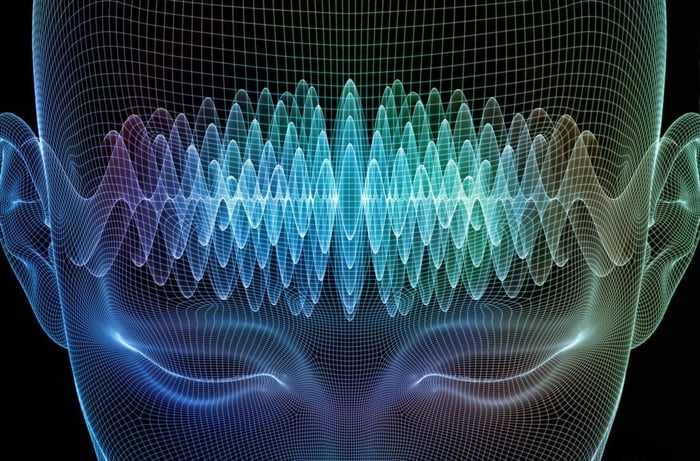Table of Contents
If you are working in the field of sound healing or sound therapy, or just taking your first sound healing training, you have probably heard of concepts such as brainwave entrainment with binaural beats, monaural beats, or isochronic tones. To avoid confusion especially when it comes to binaural vs monaural beats, please read this article. If you would love to dive deep into the world of psychoacoustics, please enroll in Sound Healing Certification Training.
What binaural beats really are?
When sound waves of different frequencies enter the inner year, they cause different areas of the basilar membrane to vibrate accordingly to the frequency of the signal. The impact of vibration on each specific region of the basilar membrane is associated with a specific frequency. Two frequencies that are close together cause an overlapping response on the region of the basilar membrane.
When the frequencies are almost the same, the brain can not distinguish them as separate tones. Instead, we hear an average frequency as well as the beating effect. Increasing the difference between the two frequencies will result in faster beats and eventually will make two frequencies that become distinguishable as two separate tones. When two frequencies close to each other are being emitted from two sources (for instance, in the left speaker for one frequency and the right for another), the beats that result from a synchronization are called Binaural beats.
If two tones with slightly different frequencies sound from one source, this phenomenon is called Monaural beats.
Watch binaural beats being generated
So how can Isochronic tones and binaural and monaural beats be used for brainwave entrainment? Entrainment is taking place when conscious listening to purposely adjusted bandwidths of frequencies engages the listener with a specific rate of beats. To slow down the brain activity, choose a slower rate; to raise the activity, increase the arithmetical difference between the contributing frequencies to accelerate the rate of pulsations.
When brainwaves become synchronized with pulsating binaural, monaural beats, or Isochronic tones, this phenomenon is known as frequency following response (FFR).
Isochronic tones are acoustical beats of a single tone that are used in brainwave entrainment. At its simplest level, an isochronic tone is a tone that is rapidly turned on and off. Isochronic tones create sharp, distinctive pulses of sound. How frequently the tone is being switched on and off is measured in Hertz (Hz).
A repetitive and distinct beat of isochronic tones produces what's known as an evoked response in the brain. This is an electrical potential of the brain following the introduction of a stimulus.
FAQs
What are binaural beats and how do they work?
Binaural beats occur when two slightly different frequencies are played separately into each ear using headphones. The brain perceives a third “phantom” beat—the difference between the two frequencies—creating an auditory illusion that can influence brainwave activity through a process known as frequency following response (FFR).
What is the difference between binaural and monaural beats?
Binaural beats require two tones played separately into each ear (via headphones), and the brain synthesizes the beat internally.
Monaural beats occur when two tones are mixed outside the ear and played through one speaker. The beat is present in the actual sound wave and perceived without headphones.
What are isochronic tones?
Isochronic tones are single tones turned on and off at precise intervals to create a repetitive pulse. Unlike binaural beats, they do not require headphones and produce a strong evoked response in the brain due to their sharp, rhythmic nature.
How do binaural, monaural, and isochronic beats support brainwave entrainment?
All three types stimulate the brain to align its electrical activity with the frequency of the beats:
Slower frequencies (e.g., Delta, Theta) promote deep relaxation or sleep.
Faster frequencies (e.g., Beta, Gamma) promote focus, alertness, or arousal.
This process is called the frequency following response (FFR).
What is frequency following response (FFR)?
FFR is the brain’s natural tendency to synchronize its electrical activity with rhythmic auditory stimuli. When listening to repeated pulses (beats), the brain “follows” the frequency, making it a powerful tool for influencing mental states.
Do I need headphones to use brainwave entrainment?
Yes for binaural beats, because each ear needs to receive a distinct tone.
No for monaural beats and isochronic tones, which can be heard through regular speakers.
Which brainwave states do entrainment techniques target?
Delta (0.5–4 Hz): Deep sleep and healing
Theta (4–8 Hz): Meditation, intuition, creativity
Alpha (8–12 Hz): Relaxation and stress reduction
Beta (12–30 Hz): Alertness, cognition, focus
Gamma (30–50 Hz): Memory, high-level information processing
Which is more effective: binaural, monaural, or isochronic tones?
Effectiveness can vary by user. Isochronic tones generally produce a stronger brain response and don’t require headphones. However, binaural beats are more subtle and often preferred for meditation. Monaural beats offer a balance between the two.
Can sound healing practitioners use all three methods?
Absolutely. Each method can be used depending on the session goals and setting. Many certified sound therapists incorporate binaural, monaural, and isochronic techniques to guide clients into desired states like deep relaxation or heightened awareness.
Where can I learn more about psychoacoustics and brainwave entrainment?
Enroll in a Sound Healing Certification Training program such as the one at Sound Medicine Academy. It offers in-depth training on brainwave entrainment, frequency following response, and safe, mindful use of auditory tools for healing.

